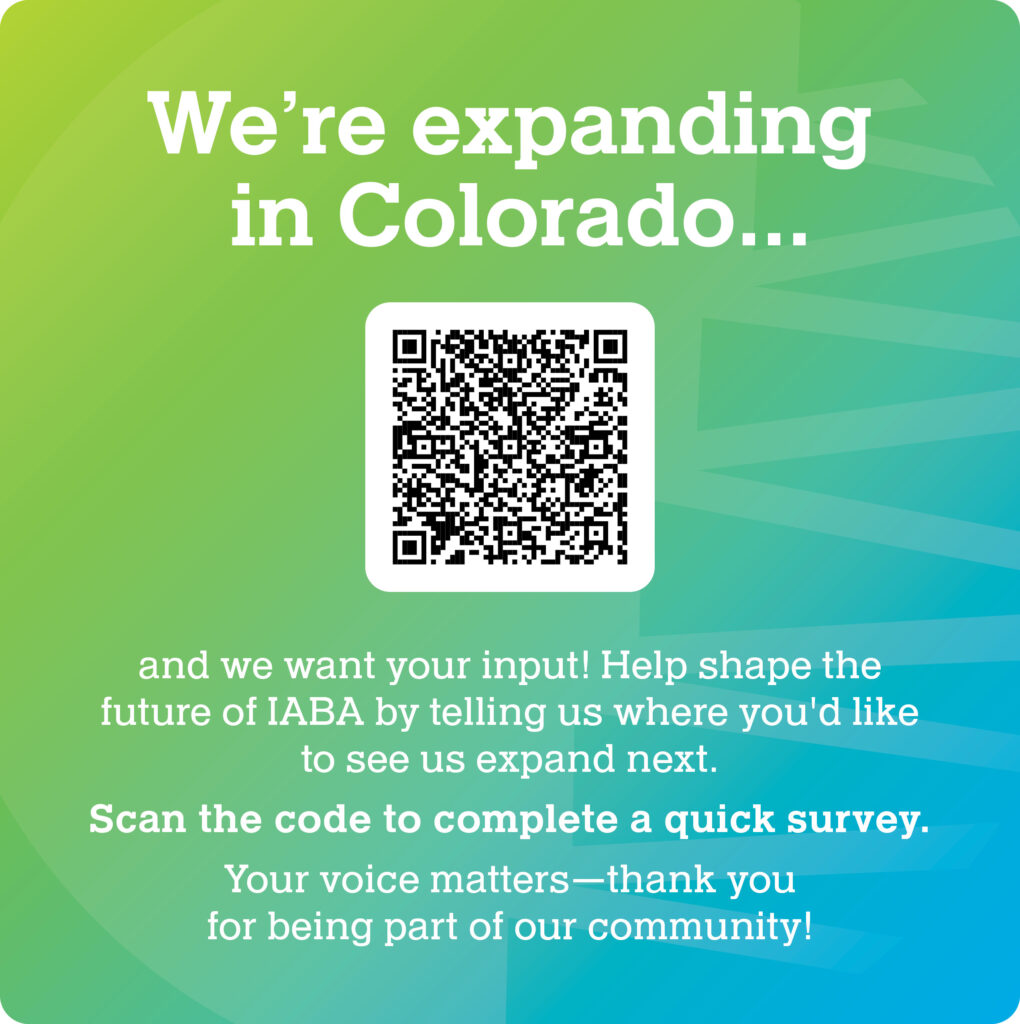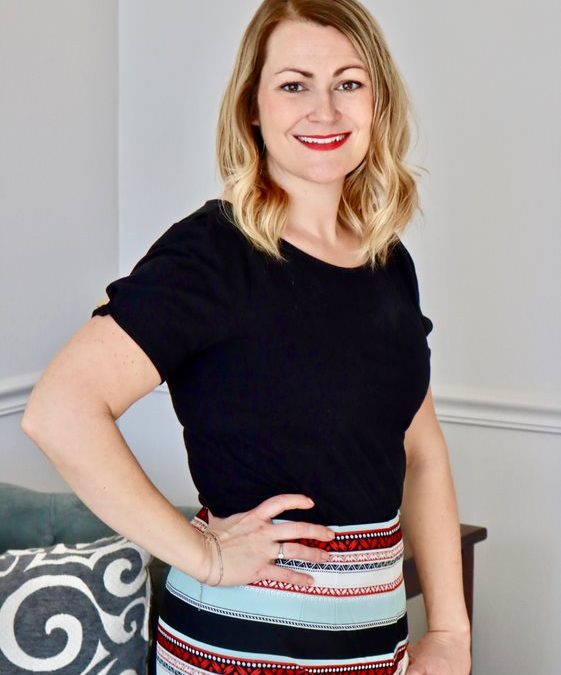
by Jessie Cooper | Jul 15, 2021
What do you do with anger that’s real? Anger that will burn cities and clear anything and everything in its path? Where did it come from and why is it here?
The very short answer is anger feels good in the moment–it’s the aftershocks that are damaging if they are unleashed without guidance. Anger is a release of pent-up emotions that have no direction to go. The ensuing explosion unleashes this anger and gives us a false pretense of power. Luckily, most of us feel horrible when we get this spot but there are people who abuse others during periods of anger.
Anger & Abuse
For those of you who abuse other people with your anger, know this: there is fear, hurt, shame, guilt, sadness, grief, and other emotions that lie just beneath your anger. While your explosions and “wins” over others may feel like triumphs they are in fact a loss.
When you give in to your anger you abandon yourself and your other emotions. You are also hurting others to make yourself feel better. This is never OK. Not ever. You can heal at any time by choosing to stop hurting others and tend to your wounds.
Onto the rest of us.
Coping with Anger
If you wield your anger like a weapon then feel guilt, shame, or other emotions after an outburst, you are experiencing what most of us experience. We all experience this at some point–no human is perfect (I promise).
Anger is a messenger that you have a lot going on and are either not taking the best care of yourself or are faced with a very challenging situation in life. Anger lets us know that we need love and care. Anger tells us to look at our brave hearts, kind souls, and human feelings and provide care.
Finding the Cause of Anger
Last week I wrote to you about rage. Rage, like anger, is a powerful emotion. When rage is the messenger and not the driver it can be destructive beyond measure. Without direction anger and rage are destructive to you, me, and everyone in our path.
After my first son, Henry, was born I suffered from postpartum depression which was exacerbated by domestic abuse. I don’t have words for the darkness I walked through during that time. I also don’t have words for the shining light of love I found in my son.
I fought my way through postpartum depression with therapy, medication, and a loving community. At the time, I still was not able to identify I was living in domestic abuse. When my son Declan was born less than two years later I was determined to avoid suffering from postpartum depression again.
Looking back at my pregnancy and the birth of my second son is bittersweet because the work and self-care I put in were incredible. None of it involved his father, other than my request to “not attack me while I have the baby.” It didn’t work. What worked was asking my friends and family to wrap me in support, encapsulating my placenta, and taking real maternity leave. I thought I had it down!
This is the point when I started to feel anger, shortly followed by rage.
Avoiding Manifestations of Anger
I remember being stumped when I thought about why I was so angry after my six-week check-up. I am not a quick-to-anger person unless I witness serious injustice. I asked my wonderful OBGYN, who supported me through both births, why I felt anger? She laughed, “you have two children under 2, this is normal!”
While I did not like this answer she was totally right. Henry and I had gotten into our groove over the past 20 months. I knew how to take care of the two of us, but caring for two babies changed our routine. I was also always walking on pins and needles during my previous marriage. My nerves were thin and my children were loud. I was sleep-deprived, nursing, and doing almost all of it on my own. Something felt like it had to give.
Anger told me I needed to find a way to take care of myself so I could cool down as a mama. I felt extreme guilt (as we all do) when I would lose it with my boys. I read this awesome book, How to Stop Losing Your Shit With Your Kids, and started a mom-tribe book club where we all applied the practices of the book while supporting each other as mamas.
I would be remiss to not mention the asshole things kids do sometimes. God I love them and, yes, they are all limbic systems, but this is so maddening when they have no survival instincts.
Not Losing Yourself to Anger
I want to let everyone know that anger is completely normal if you are going through early motherhood while living with domestic abuse. If you let the anger take over, however, you will spend most of early motherhood lost in its grasp. If I had totally given into anger I would have missed so many moments with my sons simply because I was depleted.
Now, two years later, while I still have my moments (don’t we all? Mamas?) I also know when I feel anger around the boys, what I really need is a quiet minute and to be present with them. I don’t always parent perfectly (OK, almost never) but ‘reset time’ only takes a few minutes and prevents anger from dominating my parenting, period. All because I listened to what the topography of my anger map was telling me.
Anger still comes for me, as does rage. When I see injustice against others, my children, or myself I can’t begin to explain the flames that rise within my heart. I do know that I unequivocally do not want to hurt another being. The quick release of lashing out in anger can cause long-lasting damage.
Channel Your Rage to be Productive
Anger can feel powerful. All-encompassing anger feels like it can get you anything you desire. I can promise you that this is a lie. What anger is really telling you is to pay attention to your own heart and world so that you can right a wrong. That wrong can either be how you’re caring for yourself (postpartum depression care or lack thereof) or how others are treating you (leaving domestic abuse).
If we choose to listen to anger and rage, rather than act on them immediately, we can learn they can be some of the wisest guides in our lives. Anger and rage tell us what needs to be corrected. Love tells us how to correct it.
You and I can use this wise messenger to become a warrior of love, create the lives we want to live, and build the better world we all envision. Don’t burn it down. Build it up.
Xoxo,
Jessie
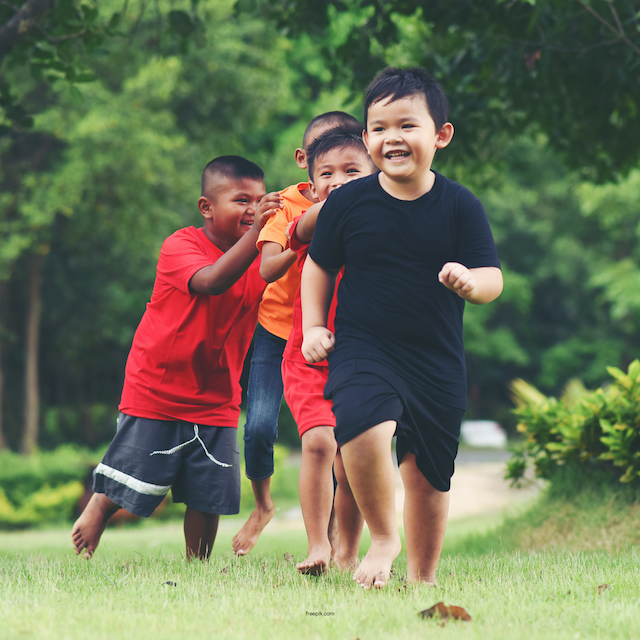
by IABA Team | Jul 13, 2021
Any parent of more than one child can tell you that no two kids ever act exactly the same. However, there are lots of behaviors and developmental milestones that are considered normal for young children. But what happens when your child’s behaviors or actions seem to fall outside of that norm?
It’s entirely possible that your child may have a condition like autism spectrum disorder. In fact, they may even have a mild form of autism that causes them to appear high-functioning enough to make diagnosis difficult.
What Is High-Functioning Autism?
Autism spectrum disorder is a developmental condition that is often diagnosed during early childhood. According to the American Psychiatric Association, people on the autism spectrum deal with persistent challenges related to social interactions, especially related to verbal and nonverbal communication. Children on the autism spectrum also use restricted or repetitive behaviors.
Although high-functioning autism isn’t an official diagnosis, many professionals use the term when discussing people with autism who can speak, write, and perform all of the basic life skills needed to live independently. Prior to 2013, this diagnosis was called Asperger syndrome, but that term is no longer used. Now, even mild or “high-functioning” autism falls under the umbrella of autism spectrum disorder.
Even though autism can vary from person to person, those with even the mildest diagnosis can still struggle with reading social cues and making friends. They may even shut down or avoid certain social situations because of the discomfort they experience. They may also follow a very strict routine and have problems when that routine is disrupted, which can make some work situations difficult.
High-Functioning Autism Can be Hard to Define
Until 2013, many people who might be said to have high-functioning autism were diagnosed with either Asperger’s syndrome or PDD-NOS (pervasive developmental disorder not otherwise specified).
But, there are differences that set those two diagnoses apart: As of 2013, with the publication of the Diagnostic and Statistical Manual of Mental Disorders, Fifth Edition (DSM-5), neither PDD-NOS nor Asperger’s syndrome is an official diagnostic category in the United States. Both are now included under the diagnosis of autism spectrum disorder (ASD). Those on the higher-functioning end of the spectrum are said to have “Level 1 ASD.”
Asperger’s syndrome was a distinct diagnosis that described a person of average or higher-than-average intelligence and age-appropriate language skills who also had significant social and communication challenges. PDD-NOS was a catch-all diagnosis. Often understood to mean the same thing as “high-functioning autistic,” it really incorporated individuals at all functional levels whose symptoms didn’t fully correlate with classic autism.
Perhaps more significantly, people with Asperger’s syndrome often had different symptoms than people with higher IQs and autism. For example, anxiety was often a symptom of Asperger’s syndrome but not one shared by everyone who might be described as having HFA.
The Challenges of High-Functioning Autism
Autism is a puzzle—not because individuals with autism are so puzzling, but because the ever-changing definitions of autism can lead to a lack of clarity.
Not only are the definitions changing but so are the social expectations that make high functioning autism so challenging. In the past, face-to-face communication was the key to personal success; today, many people with social challenges are more than capable of interacting with others online, making friends through social media, and even holding down a job at a distance.
ABA Therapy from IABA Consultants
If you have questions regarding autism treatment with ABA therapy, we are here for you! Our goal is to make sure no family is turned away due to financial constraints. Our therapy team would love to talk to you. Find the location closest to you and give us a call. We’re here for you.
Sources: Very Well Health, Moms.com
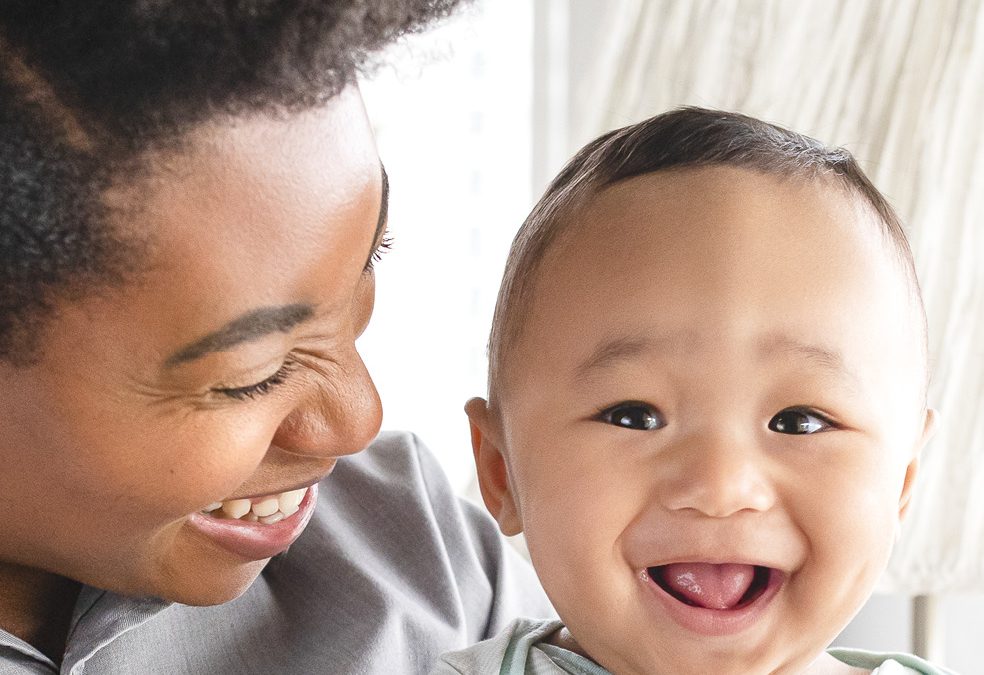
by IABA Team | Jun 10, 2021
Deciding to objectively look at your child for signs of autism is hard. Thinking about your child possibly needing alternate care or schooling when that child is still a baby was not what you signed up for. But detecting early signs of Autism Spectrum Disorder (ASD) and seeking a professional diagnosis is the best way to make sure your child lives a productive and happy life.
Early signs of ASD are not easy to detect and you should always seek a professional opinion with your observations and concerns. It is not possible to diagnose your own child with ASD from reading online tests, blogs, or watching videos. The purpose of this blog is what to look for that could potentially be a valid concern for your child.
Many early signs of ASD can be confused with normal developmental behavior. All children develop at different rates. There are some behaviors that may be valid reasons for raising concern. Let’s take a look at what to look for (and what not to look for) when it comes to your infant or young child and ASD.
What are the Warning Signs of ASD in Young Children and Infants?
There are several marker behaviors that parents should take into account when observing their infant or young child developing. Again, note that none of these behaviors means your child has ASD. These are simply behaviors that are commonly associated with ASD if they persist.
The behaviors listed are from the CDC and Autism Awareness Center.
Infant Behavior Markers (up to 12 months)
- Does not make or maintain eye contact
- Lack of facial expressions (never smiles or frowns)
- Does not respond to their name by 9 months
- Uses few or no gestures
- Does not respond to verbal cues or ‘games’
- Lack of attempts at verbal communication
Young Child Behavior Markers (up to 24 months)
- Does not share interests, such as found objects or toys by 15 months
- No pointing to indicate things by 18 months
- Lack of empathy (recognizing others are happy or sad) by 24 months
- Delayed language, motor, or cognitive skills
- Interested primarily in objects and not people
- Gets upset by minor changes
- Has unusual or extreme reactions to sensory experiences (touch, taste, smell)
Other Potential Early ASD Markers
The CDC lists the following as other marker behaviors commonly exhibited by those with ASD:
- Preterm births or low birth weight
- Environmental exposure to hazards like lead paint
- Hyperactive, impulsive, and/or inattentive behavior
- Epilepsy or seizure disorder
- Unusual eating and sleeping habits
- Gastrointestinal issues (e.g., constipation)
- Unusual mood or emotional reactions
- Anxiety, stress, or excessive worry
- Lack of fear or more fear than expected
Remember, all of the above behaviors and characteristics are just general markers. Some children who get diagnosed with ASD won’t exhibit any of the signs listed above. Always speak to a medical professional when you are unsure of what to be concerned about.
When do the Signs of ASD Start to Show?
Autism Spectrum Disorder is hard to diagnose, as there are no medical tests that reveal it. Diagnoses are made from testing conducted by medical professionals based on behaviors, developmental milestones, and other specific criteria.
With that said, warning signs of ASD can begin to manifest as early as 9 months of age. These are warning signs, not a diagnosis, however, and need to be monitored. Keeping an eye on specific behaviors and conferring with a professional is the first step if you notice one or more marker behaviors that don’t go away as the child gets older.
The CDC notes that “ASD can sometimes be detected by 18 months or younger,” but that 24 months is the age where “a diagnosis by an experienced professional can be considered very reliable.”
When Should I Seek a Professional Opinion?
The best way to seek a professional opinion is by getting one directly from your child’s pediatrician. Pediatricians can help with screening and recommendations. Sometimes developmental disorders and signs of ASD are part of a regular wellness visit for your child. Talk to your pediatrician about specifics if you have questions or concerns.
ASD screening is recommended by many pediatricians at specific developmental intervals. If your child’s pediatrician doesn’t mention an ASD screening at a wellness visit and you have concerns, ask them about it.
The American Academy of Pediatrics (AAP) recommends developmental screening for all children at doctor wellness visits at 9 months, 18 months, and 36 months of age. The AAP also strongly recommends screening specifically for signs of ASD at 18 months and 24 months.
If your child’s pediatrician believes that your child is at risk for ASD, there are two paths you can take for a formal diagnosis and care plan: private evaluations & interventions and state-sponsored early intervention programs.
What is a Private Evaluation?
Private simply refers to private pay i.e. paid for out-of-pocket or covered by an insurance company. These evaluations allow parents to select a care program of their choice to help evaluate their child.
Private evaluations are in-depth looks at a child’s development. These evaluations are handled by a licensed medical professional like a child psychologist, speech-language pathologist, occupational therapist, developmental pediatrician, or another specialized professional
These evaluations screen your child, analyze the data, determine whether or not the child needs specialized care, and then help develop a course of action. Keep in mind that private-pay evaluations may not be covered by your insurance and can cost lots of money out-of-pocket.
If you don’t have insurance or can’t afford out-of-pocket expenses for a private ASD screening/evaluation, you should look at your state’s Early Intervention program.
What is an ASD Early Intervention?
For those who cannot take on the financial burden or private ASD testing and screening, Early Intervention (EI) programs are available from individual states. These programs help families with children under 3 years of age get screened and will create a care plan if necessary. States are required by the federal government to provide several services free of charge.
If a screening or concern from your child’s pediatrician notes several at-risk behaviors, you may be encouraged to start an EI. Early intervention screenings do not require a formal diagnosis and are conducted by federal EI specialists.
The EI specialists will determine whether or not your child requires more comprehensive care. EI specialists will recommend the type of care they believe will be the most beneficial for your child.
What Should I Do If My Young Child is Diagnosed with ASD?
Both of the paths to getting a legitimate ADS screening or evaluation listed above will provide you with a care plan. Following this care plan will get you started on helping your child get the services they need to flourish.
After an ASD diagnosis, children are commonly referred to work with one of the following types of professionals:
- Psychologists
- Behavioral Analysts
- Developmental Therapists
- Social Workers
- Speech Therapists
- Occupational Therapists
- Physical Therapists
This is not a comprehensive list, it is simply to give you an idea of where your child may start in their developmental journey.
On top of your child receiving special care you, as a parent, will need to learn how to best help your child grow and develop. Talk to your child’s healthcare professional to learn what you can do to best provide the things they need most to grow.
Being active and supportive in your child’s development will help greatly in their development. Therapy for ASD shouldn’t stop when a clinic or class ends–parents should be aware of their child’s interests, behaviors, and moods to help them develop all the time.
Asking your child’s healthcare provider for information on how to learn more is the best next step you, as a parent, can take. Learn, teach, and do what you can to make sure your child grows up in a loving environment.
ABA Therapy from IABA Consultants
If you have questions regarding autism treatment with ABA therapy, we are here for you! Our goal is to make sure no family is turned away due to financial constraints. Our therapy team would love to talk to you. Find the location closest to you and give us a call. We’re here for you.
Sources
CDC Signs & Symptoms of Autism Spectrum Disorders
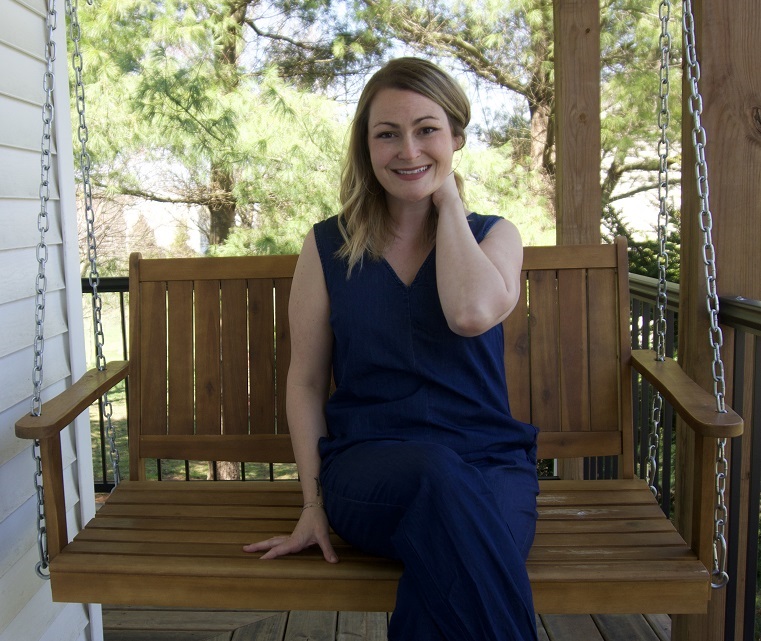
by Jessie Cooper | Apr 5, 2021
Over the past several months I have taken a different approach to my blog and written as I walk through my own journey of leaving trauma. I am healing my own personal trauma and believe in a year of a global pandemic each of us can relate in some way. Last week, I wrote about finding the courage to have the spirit of a warrior. To learn how to see fear and guide her when you are called to the battlefield. I’d like to say more.
I used to believe that life was meant for fairytales. One, because I am an empath, so connection, love, and healing are my jam. Two, because the world inundated me with messaging that, as a woman, the path to happiness was true love. The world also bombarded me with messages about marriage, gender norms, who I was supposed to be, what I was supposed to wear, how I should talk, and the like. Never being one to like being told what to do I find it surprising that I battled putting this bullshit down for so long. Society and fear signed a bad deal with the devil.
I feel that I’ve written enough about society making our decisions for us. I think I could write for days; lists of examples, from the food we eat, the clothes we buy, our mannerisms, life goals, and the like. But I’d like to talk about fear a little more. You see, where society was a cosigner on this deal with the devil, fear was the primary signer. Fear is a very wise counsel but an awful driver.
Realizing Fears
Let’s put a face to fear. Say a grandma or grandpa. Now imagine a tiny, sweet-powder smelling, kind grandparent. I’m imagining my own grandma, who wore a dress and sweater until her passing day at 96 years old. This grandparent has years of wisdom to bestow upon you that you soak in every visit. Then one day, after another enlightening conversation, your grandma wants to take a drive. She’s so wise and wonderful, soft and warm, so of course you say yes. You pull up the car, ready to drive with all her wisdom pulsing in your veins, then your grandma asks to drive.
Speaking from my own experience, my grandma did not have a license or ever drive a car. If your grandparent did, you can borrow mine for this example (but please give her memory back to me because I cherish her). You pause for a moment, grandma does not know how to drive, but she’s so wise and just gave you all this wisdom to help you navigate the challenges of life. Deep breath. OK, why not? “Er, OK Grandma you can drive.” Bad fucking plan. Within five minutes you are in the ditch, the car is flipped, and sirens are on the way. Grandma, as wise and wonderful as she is, cannot drive the car. Fear works just like this.
Fear tells us so much about what we need to know about the potential of danger and harm. If we go back thousands of years, fear literally evolved to keep us safe. From the limbic system all the way to your taste buds. Just as an example, at around 2 year of age (when prehistoric babies would begin solid foods) taste buds develop a disdain for bitterness and seek out sweet food. The origin of this is so that when foraging babies would not eat poisonous plants. Smart little taste buds! Now we have an entire society built around this knowledge as parents blindly give sugar to children based on the food industry’s capitalization on this knowledge. See, more society in that example. Our bodies are so wise and fear lives in them to keep us safe. What fear cannot do is become a thought that makes a wise decision. Fear is grandma in the ditch.
Fear begs us to let her drive, just like grandma, because she is afraid. Fear does not want anything bad to happen to us and, to prevent a potentially catastrophic event from happening, it tells us grandma can’t drive. If we are not grounded in our own love and wisdom, however, we give fear the keys. My goal for all of us is to learn when fear is driving, but be able to place her gently back in the passenger seat. To learn to take her wise council as love directs the wheel.
Becoming Fearless
Life is not about fairytales and achieving the life society tells us we need. A life built on what other people want for us, which society says we should want for ourselves, is the quickest way to unhappiness. It’s also the quickest way to block your potential, gifts and contributions to this beautiful world. Think about it. If we set 100 grandparents without licenses free on the highway we know there would be some crashes. And yet, so many of us are either upset about our own lives or the state of the world. It’s not what we want for our lives. So why do we continue to live this way?
Well, if grandma was driving your car and you legitimately gave her the keys because you thought her wisdom would carry over to the steering wheel, would you blame yourself for the crash? Nope. You made a poor choice, you can offer yourself compassion, and learn from your mistake. The thing is, you need to be the boss of fear. To tell her you hear her message, you will bring it to the council of love, and you will report back to her for the next step of the journey. But there is no way in hell you are giving her the keys. It feels scary to say no to fear, just like it feels scary to say no to your grandma’s wish to drive. But it’s OK. I promise. You’re keeping everyone safe.
Life is not about being happy all of the time, that’s not a real expectation any of us can achieve. This I know to be true. If fear is telling you “wait, we’re not happy! do something else!” she is driving. Fear needs us to sit on the porch, hold her soft, aging hand, and listen to why she feels this way. To walk with her, hear the struggles and dangers she sees, then turn this over to love to decide the next course of action. Love is a wonderful driver. She lives in all of us, waiting to be set free and not limited by fear.
I am firmly planted in the belief that pain comes for each of us and is not something to be afraid of. We can stand boldly in our pain, feel it, and live to tell what we learned. When we do this, we access more joy on the other side of pain and fear than we ever imagined. This is the truth that society is keeping from us. You don’t need anything to be happy except yourself. Experiencing pain does not take away from your capacity to be happy. Joy is always on the other side.
Xoxo,
Jessie
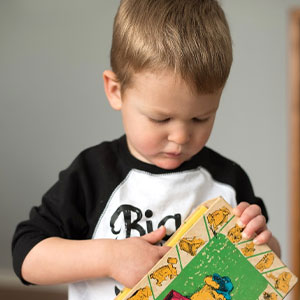
by Jessie Cooper | Dec 10, 2020
If you’re a mom of young children like me I’m sure you’ve had the thought of going to the zoo once or twice. It goes something like this:
The local zoo announces a baby. Let’s say an elephant is born so of course, you go rushing! You get to the zoo (pre-COVID, maybe) and see the beautiful baby elephant, just days old, walking behind their mama. In a short moment, you think back to your child’s infanthood and think, “baby boy(or girl) you had fewer skills than an elephant.” Infant humans, while incredibly squishy, cute, and forever smelling of Dreft and lavender, come into the world with no survival skills.
There are thousands of articles on the importance of early intervention. I spent my bachelor’s degree diving into many of them, followed by stocking my brain with new findings for the past decade. This is in part because I am a researcher by trade. The other part is because I am a nerd for human development. It fills my bucket. In my blog today I’m going to try and give you a snapshot of why development from infancy through kindergarten is so vital. I’m also going to talk about why it’s important for children with autism and our amazing clinics at Instructional ABA Consultants.
Focusing on Child Development Early
OK, let’s get started by going deep. Human infants are born without any skills because their brains need more time to develop than all other mammals. If babies grew into functional toddlers in the womb they could not come out of the birth canal. Women’s bodies are incredible but they aren’t magic; there is a limit to the size of what we can birth (yes, I’m grimacing as I’m writing this because medication-free birth with a newborn is magical, but birthing a toddler? Um…).
So we get these tiny humans, who are desperately in need of being cared for–it’s almost like they are in the womb for an extra three months after delivery. Then they begin to wake up. I remember when both Henry & Declan found their toes and fingers in amazement around three months old.
During this first year of life, thousands upon thousands of neuroconnections are made. Babies are quickly developing their brainpower, motor skills, and language through these high-speed connections. To do this babies need a few simple things. Infants need to be nurtured, to know that when they have a need their parent responds. This creates a secure connection and lets baby know the world is safe. Babies need food and lots of sleep. Once these basics are covered we move into the two most important things; environment and socialization.
Early Socializing & Environments
I like to think of babies, toddlers, and children as little scientists learning through cause and effect. The environment is a huge blank canvas for our children to discover how their world works. Socialization is the tool children need to survive in our culture.
In their early childhood years, these two pieces are so incredibly important because of the rate children can learn. From infancy to year five, children will learn more than any other time in their lives. “What about college,” you say? Nope. These foundational years are the years where connections are made in the brain that last a lifetime.
As a professional, I love looking at how all this heavy lifting helps to shape the outcome of children’s lives. As a mama, I drove myself crazy after Declan was born and I realized I was basically running a school in my home for Henry. This wouldn’t be possible with two kids under two.
This was insanity in hindsight. This was also when I was personally able to take a deep breath and remember what I knew. The two most important things are environment and socialization. It’s not about how “cute” my day is with my boys. It’s about how often they are able to explore and engage. These days you won’t really find me teaching at a table much. Instead, you’ll see a “yes” environment set up (more on this later but basically a safe space to learn), technology out of reach (no TV/no Tablets on the regular as these devices delay both language development & socialization), and lots of talking.
Henry and Declan get to flex their learning muscles through exploration and language. I get to flex my relaxation muscle by not trying to do it all. I’m lucky in that way because my children do not need intervention. If they did I would not be able to sit back because these experiences would need to be contrived. That’s why ABA is so helpful for young children with autism. Here’s why.
The Importance of ABA Therapy for Autism
When a child has autism the neural pathways or roads in the brain that tell that child how to communicate and process information are not forming, either naturally or as quickly as a neurotypical child. The connections are still there to be made but without intervention, a child with autism can’t connect the dots. What this looks like in each child with autism is different but always results in some form of socialization or communication developmental delays. This leaves the child with autism lost in their social world and wondering how to connect.
In applied behavior analysis (ABA), behavioral scientists (BCBAs) are able to assess the language and communication skills missing in early childhood based on developmental milestones. Children with autism are gifted learners but they learn differently because their neural pathways are routed differently. Through assessment, BCBAs are then able to figure out how our little students learn, what skills are missing, and how to connect those missing dots. This happens in three really key ways.
The first is one on one therapy (think personal trainer at the gym) to really teach to the student. The next is to help the child with autism apply what they are learning with their peers. Remember, socialization is hard but children who are neurotypical learn from other children. To strengthen the socialization neuropathway, children with autism need to practice these skills with kids their own age. The last is transferring learned skills back to mama and papa. If a child with autism is in therapy and can do all these skills at a treatment clinic but not at home, the neural pathway is not fully formed.
Therapy at ABA Consultants
Instructional ABA Consultants runs autism clinics for children ages 2 ½ to 6 years old (in addition to our home-based therapy for older children). Our clinics (Naperville & Oak Lawn IL, Castle Rock CO, and coming soon Northside Chicago) have a Preschool Instructor designing the socialization component of our students’ days and BCBAs designing the individualized instruction. Parents are at the core of treatment goals and together we’re helping their precious children make connections in their early development.
Whether you’re a parent of a neurotypical child or a child with autism know that your child’s early years are precious. While we all can dream of our children functioning like that baby elephant walking around fully skilled, the reality is human babies and children need shaping. We’re a social species.
So set down the tablet today, pack up all the toys the marketing teams said you needed, and let your children explore and enjoy. If your child isn’t exploring, jump in and help. If you need help teaching these skills because your child has autism (or this is a new way to parent for you) reach out. We’re all in this crazy world of parenthood together.
XOXO,
Jessie






